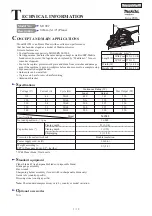
7
EN
GL
IS
H
10
L
10
K
10
M
10
N
10
L
10
E
10
O
10
E
10
F
10
K
When level planing, the extraction hood (E) must be mounted as it acts as a cover!
1. Lower the table (J) as far as it can.
2. Loosen the arm (F) holding the cutter cover (K) and unfold it.
3. Pull both locking levers (H) on the extraction hood.
4. Push in the extraction hood under the levelling table so that
the locking levers (H) fit the vents in the levelling table (G); push in
the locking levers (H).
6.3 Setting cutter cover
1. Loosen the locking wheel holding the arm (F) and lift to the correct
height (the material’s thickness); tighten the locking wheel.
2. Press the cover against the material so that it covers the cutter’s
free parts, or place above the material if it is wide.
3. Tighten the cover’s locking wheel.
6.4 Level planing
1. Mounting the extraction hood.
2. Set the desired cutting depth with the wheel (L); settings of the feeding table (N) are shown on the shell (M)
(clockwise = decrease, counter-clockwise = increase).
3. Cutting depth of 0.5–1.5 mm provides the best surface.
Warning!
Position the cutter cover so that it covers
the cutter’s free parts.
4. Press the board against the feeding table and position the cutter cover at the same height as the left hand
(the board should easily go through the gap). Start the motor and let it rev up then slowly and carefully feed
the board through over the cutter. Allow hands to move over the cutter cover.
6.5 Surface planing
1. Mount the extraction hood (E) above the levelling table.
2. Set desired dimension for the material with the crank (O)
(1 turn = 3 mm), feed the material’s thickness and set
the planing thickness 1–2 mm less and make the first
plane cut.
3. Start the motor and let it rev up then slowly and carefully
feed onto the planing table with the level planing side facing
downwards.
4. Slowly push the board inwards until the feeding roller grips
the board. If the board is wedge-shaped put the thicker end
in first.
Warning!
Never plane short material, feed in narrow materials in
the middle of the width of the cutter. Make sure the cable moves
freely and does not get tangled in the cutter.








































